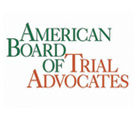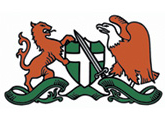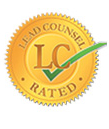In California, drivers and car owners are required to purchase auto insurance. Many people do not know how the car insurance policy works until they are involved in road collisions. There are several complicated requirements that your insurer or at-fault party's insurer needs you to meet after a car accident.
It is recommendable to seek help from a car accident attorney to ensure that every process is right and is followed accordingly. At the Los Angeles Car Accident Attorney, we will help you every step of the way while dealing with your insurance company or the at-fault party's insurer to ensure that you are compensated accordingly.
Requirements for California Car Insurance
Under California car insurance laws, there are several mandatory and optional requirements needed to be considered. Let's have a closer look at these car insurance requirements required in California.
Mandatory Car Insurance Requirements in California
In California, every driver should maintain the following car insurance amount:
- A minimum bodily injury liability insurance of $15,000 for each drier or $30,000 for every accident
- A minimum property damage liability coverage of $5,000
- Minimum bodily injury coverage for uninsured drivers of $15,000 each person or $30,000 for every accident
- A minimum property damage coverage of $3,5000 for uninsured motorists
Besides the above-stated mandatory car insurance requirements, there are other options that a California driver can choose. This includes:
- Pay $3,5000 to the California DMV
- Get a self-insurance certificate from the DMV
- Obtain a surety bond worth $3,500 from a licensed issuer
A California driver can also opt to secure a collision and comprehensive insurance, Personal Injury Protection (PIP), and MedPay insurances. Here is a closer look at these options.
Comprehensive and Collision Insurance
These two optional insurance policies are meant to cover different aspects once a car owner has been involved in an auto accident. Collision insurance is meant to cover damages that result from a collision with a property, vehicle, or person. It can cater to repairs and replace your car if another pedestrian, bicyclist, car have damaged it, or when the damages have been sustained by a collision with other objects such as a sidewalk, garbage, or mailbox.
On the other hand, comprehensive coverage caters for damages that result from an event that is not an accident. These non-collision objects include theft, vandalism, earthquake, fire, hail, and falling tree branches.
Please note that California laws do not require both collision and comprehensive insurance, but some lenders might require one to have them to finance a car purchase or lease.
The significant difference between collision and comprehensive and property liability insurance is that it can cater for amounts above the $5,000 required in the property damage liability. It can also include your damages.
The adjuster will determine your vehicle’s market value depending on its model, make, and year of manufacture. Therefore, they will pay up a sum of the car's worth if you could have traded it if it was not for the accident. This means that a collision would not be a chance to receive an upgrade of your vehicle based on the amount you would have paid out.
California Personal Injury Protection and Medical Pay Benefit Insurance
PIP and MedPay are optional policies used to cover medical and treatment services after an auto accident. California laws do not require these insurance policies, but it would be a suitable option to protect yourself.
California Fair Claim Settlement Regulations and Rights
There are specific requirements to be completed by the insurer. These requirements include:
- Advise you on the benefit, time limits, coverage, and other provisions in the policy you are about to purchase
- Acknowledging a claim under investigation and providing instructions, necessary instructions, and assistance within fifteen days after receiving the notice of a claim
- Accept or deny a claim immediately, but not later than forty days after receiving the claim notice.
- Pay a reasonable towing expense unless the insurer instructs you to depend on a particular towing facility or company.
- Give a fair settlement that demonstrates the current value of your damaged vehicle.
- Telling a policyholder to pursue subrogation. This involves collecting money from the at-fault party to recover his or her funds. These funds should consider deductibles unless the policyholder recovered them differently.
California as an At-Fault State
California is one of the at-fault states when it comes to car insurance. This means that the at-fault party should take responsibility for the accident and pay for it. Therefore, the at-fault party's insurance company should pay for the damages that result from the accident.
The damages could include expenses such as medical bills, vehicle damages, lost wages, and others. The amount awarded in a compensation claim is up to a particular limit. For instance, the at-fault party's insurer can only pay $15,000 for the personal injuries incurred by the victim. The amount paid to you depends on the injuries suffered, the cost of your treatment, and other related factors.
Comparative Negligence Law in Personal Injury Compensation
Everything works out well if one driver is found to be at-fault in the accident. However, when two or more parties are found liable for the accident, California insurance law relies on the comparative negligence rule. The actions of the two drivers will be determined and assign responsibility depending on the percentage of their fault.
For instance, if you were found to be 30% responsible for the accident, the other driver is 70% responsible for the accident. Therefore, you will be eligible for a 70% compensation of the total compensatory amount.
How Insurance Works in Compensation Claim
The majority of car accident compensation claims end in settlement than a jury verdict. A settlement involves both parties (the claimant and the at-fault party) to agree on the settlement and control the outcomes. Under the California Rules of Court 3.1380, the opposing parties should participate in several settlement conferences before deciding on a court trial.
There are several steps involved while settling a compensation claim in California. Let's have a detailed view of these procedures.
Getting Assigned to an Adjuster
Once you have reported a car accident to your car insurance, they should assign an adjuster to your case. In most cases, an adjuster will contact you by phone, but sometimes they can contact you by email or mail.
Under California law, the adjuster will contact you within fifteen days after receiving a notice for a claim. The adjuster will then ask you to gather all evidence to determine who is at fault and the extent of damages in the car accident.
The alleged at-fault party does not have to prove anything since the court assumes that they are innocent unless proven otherwise. Once the at-fault party insurance adjuster notes that you are prepared to present substantial evidence for your court case, he or she will be compelled to pay more to keep you from filing a lawsuit.
This means that you need to have an organized accident file containing original documents related to the injury claim. The organized accident file should have essential evidence to help you prove your case. The following are the vital evidence that you need to present.
-
Police Report
Once a car accident has occurred, local enforcement officers always investigate the incident and file a report related to it. You need to obtain a copy of the police report and ensure that it includes the responding officer's name and signature. Ensure that the copy is a final report to ensure that every detail related to the accident is captured. For instance, if the officer recorded that the accident's cause was DUI, you should consider an amended report indicating the at-fault driver’s blood alcohol level that associates him or her to the DUI.
-
Photograph and Video
You are expected to have taken as many photos as possible in the accident scene. You should also have pictures of your injuries. This kind of evidence is necessary since it offers a suitable ground indicating that you suffered injuries due to car accidents.
-
Medical Records
You also need to have relevant medical records that show the treatment of the injuries suffered in the car accident. Your medical providers will produce these records, but you need to ensure that they are up-to-date. They should also be dated and signed.
-
Witness Statements
Having a strong and independent witness statement would help you present a strong case in a personal injury lawsuit. You will need the name, address, and phone numbers of the witness. If you have a written statement, it should be dated and signed by the respective witnesses. Your attorney can depose the witness under oath to verify whether the statement provided is valid.
-
Injury Diary
Having clear notes about your injury provides effective support for your compensation claim. The diary should have data entries of your pain levels, inability to perform regular activities, and nightmares. Avoid putting in your notes something that you would not want the jury to see since it might compromise its integrity.
-
Verification for Your Lost Wages
You should ask your employer to provide a signed statement that details how you missed your work and how much pay you lost. You should then support the statement with copies of previous pay stubs and income tax records. In case you proceed into a court case, your employer will be requested to either provide an affidavit or testify about your lost wages.
Tips for Your First Discussion with an Insurance Adjuster
Your first discussion with the insurance adjuster might prove to be difficult since you are probably in pain. You need to be careful with everything you speak during this discussion since any slip of the tongue might compromise your case. However, if you use common sense and a few guiding principles, you will avoid saying something that would adversely affect your case. Here are a few tips on how to carry yourself during your first discussion with the adjuster.
-
Take Note of the Details of the Adjuster
Before you start any discussion, you need to get the name, address, and phone number of the insurance adjuster. You should also take note of the company represented by the insurance adjuster. Ensure that you keep a record of the information.
-
Remain Calm and Polite
Although you might be angry about the accident and the injuries sustained, it is not recommendable to take your anger against the insurance adjuster. This would not help in your compensation, but will only compromise the outcome. The sooner you settle your injury case, the higher the chances of negotiating with the insurance company. Therefore, it is crucial to remain calm and avoid losing your temper. Most insurance adjusters have goodwill towards their clients and are willing to pay them off as soon as possible.
-
Allow Limited Access to Your Personal Information
In your first discussion, you need to give the insurance adjuster your name, address, and telephone number. Therefore, you do not have to discuss your schedule, income, or detailed information about your family.
-
Avoid Getting into Details
Most of the tips provided above apply while negotiating with another person's insurance adjuster. However, when discussing with your insurance company, you might be required by some of your policy’s rules to give your insurance adjuster information about the accident. Be careful when signing anything, especially when you are presented with a release form that allows the firm to gather information.
Third-party insurance adjusters might try to get you into giving a statement related to the accident or engage you in a conversation trying to get you to tell them about the accident subtly. You should refuse any facts about the accident apart from the most basic. You can decline their luring by telling them that you will continue with the discussion at the right time. It is essential to give such a statement, especially when investigations are going on.
-
Beware of the Witnesses that you Give Out
If you are asked about any witnesses, you should tell the adjuster that you will let the insurer know at the right time. This will avoid committing yourself in identifying the witnesses and providing their statements at this point.
-
Beware in Your Description of the Injuries
Naturally enough, the insurance adjuster will try to know about your injuries. However, you should not give any detailed description if you leave something out or discover an injury later on. Your injuries can turn out to be worse than you initially thought. Once your true extent of injuries and treatment has been found, you can give a detailed description of the injuries.
Negotiating with the Adjuster
A reasonable settlement does not just happen. You and your adjuster should have a mutual interest in settling your claim and come up with a prompt and fair compensation, although each of you will have different ideas of what is honest.
If you want to be fully compensated for your damages, the adjuster will come with a quick and cheap option. Therefore, you should rely on a step-by-step negotiation with the adjuster. All you need to do is convince the adjuster that their policyholder was at fault for the accident, and you suffered measurable damages due to the policyholder's negligence.
Proving that the Other Party was at-fault of the Accident
Since you are expected to prove to the insurance adjuster that the other party was at fault of the accident, you need to provide concrete evidence to hold the other driver liable for the accident. Here are a few aspects that you can use.
-
Apparent Violations of Traffic Laws
It is easier to assign fault to a particular party if he or she has broken traffic laws. Some apparent traffic violations include running a stop sign, speeding, and failure to yield. You and your attorney should look up at the status of the vehicle in question and use it to support your argument to the adjustor. This will help you to be taken seriously and make you sound confident and knowledgeable.
If you were involved in a rear-end collision, the law would support you if you were the driver in front. This would apply even when the defendant was driving close to your bumper during a traffic snarl-up. The idea behind this is that the rear driver should fall back and leave a few car lengths between his or her vehicle and the one in front. However, you might fall liable for the accident if your car had poor brake and light systems that would have notified the rear vehicle that you are about to come to a stop.
-
Using a Police Report to Prove Fault
It is essential to have a copy of a police report while pursuing compensation for your car accident case. This will prove that the responding officer cited that the other driver was in violation, but it will also include the officer's thoughts. The police report could be your most valuable tool to prove liability and protect your interest if the other driver was at fault.
In most cases, the officer does not show up at the accident scene. However, you are expected to go to the nearest police station and recount what happened as the officer writes it down. He will then request the witnesses to back up what you and the defendant had said.
Please note, you need to check the report for any inaccuracies. You can quickly fix errors such as the time and place mistakes to ensure that the report highlights precisely what happened in the accident.
Calculating the Value of Your Injury Claim
The losses that you suffer in a car accident are referred to as damages. The insurance company will not tell you what you should claim as your damage, so you need to include everything in your presentation.
In a personal injury claim, damages are divided into two. This includes special and general damages. They are also referred to as economic and non-economic damages. Special or economic damages are those types of damages that you can measure. This include:
- Medical bills
- Treatment and therapy bills
- Out-of-pocket medical expenses
- Lost wages
- Replacement services such as household services
On the other hand, general damages are harder to calculate and include:
- Emotional distress
- Loss of consortium
- Pain and suffering
Two ways are used to determine the cost of your general or non-economic damages. This includes the per diem and the multiplier method.
With the per diem method, the total amount needed to be compensated is considered based on the number of days that you have been in pain and then multiply it with the number of days you have suffered. However, if you end up with a lifetime pain, this would not work.
The multiplier method is usually used when the per diem method fails to work. An adjuster will add special damages and multiply the number by 1.5 to 5 depending on:
- Medical treatment that you have acquired up-to-date
- The severity of your injuries
- Whether you will have a permanent or temporary effect
- How much treatment you expect to get in the future
Of course, you will present an argument for a higher multiplier while the insurance adjuster seeks a lower multiplier. Sometimes the highest number (5) can be increased depending on the possibility of prolonged recovery and whether the injuries are immediate.
Getting into a Final Settlement
You need to be prepared to reject a low settlement offer in the initial demand politely. You should work down from the demand a little time at a time. With patient and persistence, you should be able to arrive at an acceptable settlement.
Once you have reached an agreement, send a follow-up letter to confirm the amounts and the terms. Carefully review the settlement agreement that you agree on and ensure that it matches your verbal agreement.
Find a Car Accident Attorney Near Me
At the Los Angeles Car Accident Attorney, we have many years of experience dealing with vehicle insurance companies and adjusters. We know the tricks they use and know how to avoid them. Most importantly, we know your rights and believe that you should be compensated accordingly after getting injured in a car accident. We combine aggressive litigation with top-notch expertise to get into quick and favorable resolutions for our client's personal injury cases. Contact us at 424-237-3600 to talk with a car accident injury attorney.






